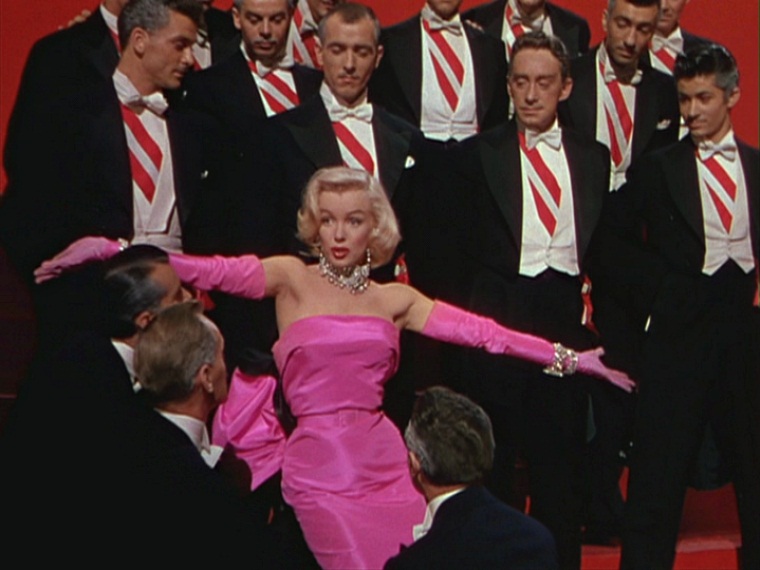The story of Earl J. Hymie Weiss is one steeped in the turbulent and bloody history of Prohibition-era America. Born Henryk Wojciechowski on January 25, 1898, in what was then Congress Poland, Weiss’s life would become a testament to the American Dream’s shadowy underbelly. His family emigrated to the United States in 1901, seeking a new life in the land of opportunity. They settled first in Buffalo, New York, before moving to an Irish district in the north of Chicago, where they Anglicized their names to William and Mary Weiss. Young Henryk, along with his siblings Bernard, Frederick, Violet, and Joseph, grew up in a melting pot of cultures and influences, which would later shape his life in the criminal underworld.
As a teenager, Weiss’s criminal inclinations began to surface. His first brush with the law earned him the moniker ‘The Perfume Burglar’ after a botched burglary resulted in the spilling of fragrances. It was during these formative years that Weiss befriended Dean O’Banion, an Irish-American who would become a central figure in Chicago’s gangland. Together with George ‘Bugs’ Moran, they established the North Side Gang, which would grow to control bootlegging and other illicit activities in the northern part of Chicago. Weiss, who had adopted the name Earl, perhaps as a nod to the prestige associated with British earldom, was also known by the derogatory nickname ‘Hymie’ and ‘Hymie the Pole’ later in his career. Despite this, he was a devout Polish-Roman Catholic, always carrying a rosary alongside his gun, and held a strong aversion to prostitution, which fueled his disdain for the south side vice cartels.
Weiss’s ingenuity in the criminal world was evident early on. He is credited with the first known use of the ‘one way ride’, a sinister practice of organized crime where a victim is lured into a car with their killers and murdered en route to or upon arrival at a destination. This method was first seen in action in July 1921, when Weiss was spotted driving off with Steve Wisniewski, a local criminal who had hijacked a Northside beer shipment. Weiss’s ruthless efficiency and strategic mind made him a formidable figure in the gangland of Chicago.
The personality of Earl Hymie Weiss was as complex as it was fearsome. His own brother Fred, when questioned about him, recounted a chilling encounter: ‘I’ve seen him once in twenty years… that was when he shot me, six years ago.’ Weiss’s reputation for violence was well-known, and he had little patience for those who crossed him or his interests. Photographers who attempted to capture his image were met with a deadly glare and a quiet threat: ‘You take a picture of me and I’ll kill you.’ His audacity was further demonstrated when he chased away a deputy U.S. Marshal at gunpoint, a man who had come to arrest a friend at a party Weiss was attending. Even after the marshal returned with reinforcements and arrested the friend, Weiss had the gall to file a lawsuit for silk shirts and socks he claimed were stolen during the raid.
Journalist James O’Donnell Bennett once described Weiss as ‘the brainiest leader that North Side boozedom ever had’, a testament to his cunning and strategic prowess. Following the murder of his friend and fellow gang leader Dean O’Banion in 1924, Weiss took the helm of the North Side Gang and embarked on a campaign of vengeance against the Torrio-Capone Gang and the Genna Brothers. Despite being terminally ill with cancer, Weiss’s determination to seek retribution was undeterred. He orchestrated bold attacks on his rivals, including a notorious incident in January 1925 when the North Siders shot up Al Capone’s car, narrowly missing Capone but wounding his entourage.
Weiss’s leadership of the North Side Gang was marked by a series of violent confrontations with the Torrio-Capone organization. After an ambush on Johnny Torrio, which left him severely wounded, Torrio retired and handed control of his gang to Al Capone. This change in leadership did not quell the violence, and Chicago was soon engulfed in a city-wide gang war. Weiss, with his allies, continued to challenge Capone’s dominance, culminating in a brazen attack on Capone’s Hawthorne Hotel headquarters where over a thousand rounds were fired in an attempt to assassinate the infamous kingpin.

Weiss’s audacity and fearlessness made him a legend in the annals of organized crime. His life, though cut short, was filled with the kind of drama and intensity that would later inspire countless gangster films and television shows. His portrayal in media, from the 1931 film ‘The Public Enemy’ to the more recent ‘Boardwalk Empire’, serves as a testament to his enduring legacy as one of the most influential and feared mobsters of his time. The story of Earl Hymie Weiss is a saga of ambition, power, and the relentless pursuit of supremacy in the violent world of Prohibition-era Chicago.
The saga of Earl J. Hymie Weiss is a tale of ambition, power struggles, and the relentless pursuit of supremacy in the violent world of Prohibition-era Chicago. As the leader of the North Side Gang, Weiss’s bitter rivalry with Al Capone is the stuff of legend, marked by a series of violent confrontations and assassination attempts that would ultimately lead to his untimely death.
Following the murder of his friend and fellow gang leader Dean O’Banion in 1924, Weiss took the helm of the North Side Gang and embarked on a campaign of vengeance against the Torrio-Capone Gang and the Genna Brothers. Despite being terminally ill with cancer, Weiss’s determination to seek retribution was undeterred. He orchestrated bold attacks on his rivals, including a notorious incident in January 1925 when the North Siders shot up Al Capone’s car, narrowly missing Capone but wounding his entourage.
Weiss’s leadership of the North Side Gang was marked by a series of violent confrontations with the Torrio-Capone organization. After an ambush on Johnny Torrio, which left him severely wounded, Torrio retired and handed control of his gang to Al Capone. This change in leadership did not quell the violence, and Chicago was soon engulfed in a city-wide gang war. Weiss, with his allies, continued to challenge Capone’s dominance, culminating in a brazen attack on Capone’s Hawthorne Hotel headquarters where over a thousand rounds were fired in an attempt to assassinate the infamous kingpin.

The audacity and fearlessness of Weiss made him a legend in the annals of organized crime. His life, though cut short, was filled with the kind of drama and intensity that would later inspire countless gangster films and television shows. His portrayal in media, from the 1931 film ‘The Public Enemy’ to the more recent ‘Boardwalk Empire’, serves as a testament to his enduring legacy as one of the most influential and feared mobsters of his time.
Weiss’s audacity was further demonstrated in August 1926, when he and his associate Vincent Drucci, along with their entourage, were attacked by a contingent of Capone gunmen, including Paul Ricca, who was arrested at the scene. The gun battle took place on South Michigan Avenue, near the Standard Oil Building. The North Side Gang leaders survived the attack, reportedly due in large part to Drucci’s personal efforts in driving off the assailants.
In retaliation, Weiss orchestrated a dramatic assault on Capone’s stronghold on September 20, 1926. A procession of ten vehicles unloaded gunfire into Capone’s Hawthorne Hotel, on 22nd St. in Cicero. Over 1000 rounds were fired. Police at the time believed Weiss, Drucci, Moran, the Gusenburg brothers, and other North Siders were the gunmen in the attack. Capone was on the premises at the time of the shooting but was able to flee out of the back of the building during the ambush. Paul Ricca, who was wounded in this attack, reportedly warned Capone and others as the North Side convoy came down the street.
The life of Earl Hymie Weiss came to a violent end on October 11, 1926. Jury selection for a murder trial of Joe Saltis, with whom Weiss sought an alliance, began on that day, and Weiss and four of his men were sighted there. With him that day were his bodyguard Sam Pellar, gangster Paddy Murray, attorney William W. O’Brien, and Benjamin Jacobs, an investigator for O’Brien. In the late afternoon, as they left for their State Street headquarters, Schofield’s Flowers, two gunmen hidden in a nearby rooming house opened fire with a submachine gun and shotgun. Weiss and Murray were fatally wounded by this first burst. William O’Brien was hit four times and staggered into a nearby stairwell. In the chaos, Sam Pellar instinctively fired towards the source of the shots, unintentionally hitting Weiss as he collapsed onto the sidewalk. Pellar and Jacobs, both wounded, managed to retreat, with bullets following them the whole way, some even chipping the cornerstone of the Holy Name Cathedral across the street.
According to the Chicago Police, Jack McGurn was behind the tommy gun that day. Sam ‘Golf Bag’ Hunt, was supporting McGurn from a nearby building, where police found his signature golf bag with a shotgun inside it after the murder. Frank Nitti is credited with masterminding the use of the machine-gun nest in Weiss’ assassination. However, a witness, Charles E. McKibben, accused Pellar and Jacobs, the injured men, of having shot Weiss.
Weiss is buried at Mount Carmel Cemetery in Hillside, Illinois, the same place as Al Capone and Dean O’Banion. He was succeeded as leader of the North Side gang by Vincent Drucci.
Weiss’s life and death are a stark reminder of the brutal reality of gang warfare during the Prohibition era. His story is one of a man who rose from humble beginnings to become one of the most powerful figures in the Chicago underworld, only to be cut down in his prime. The legacy of Earl Hymie Weiss continues to captivate the imagination of those interested in the history of organized crime and the Prohibition era.
The life of Earl Hymie Weiss is a narrative that resonates with the echoes of a bygone era. His rise to power, his fearless confrontations with Al Capone, and his dramatic demise are woven into the fabric of American history, painting a vivid picture of a time when the nation’s thirst for illicit alcohol fueled a bloody underworld war. Weiss’s story, though ending in tragedy, remains an indelible part of the tapestry of Chicago’s past, a reminder of the city’s tumultuous journey through the Roaring Twenties.
Related posts:
Hymie Weiss
Hymie Weiss – The Man Who Stood Against Al Capone – MadeGuys.co





